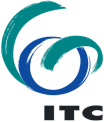LEARN FLOOD AND DROUGHT MONITORING USING FREE AND OPEN SATELLITE DATA, PROGRAMMING AND SOFTWARE TOOLS VIA JUPYTER NOTEBOOKS AND GOOGLE EARTH ENGINE
Floods and droughts are among the world’s most devasting disasters. Timely spatial information on such events may reduce their impact, and analysing past events can assist in effective prevention and mitigation.
You will be introduced to opportunities for monitoring floods and drought using analysis-ready Earth observation (EO) images and products and open and online source tools for subsequent analysis. The course starts with an overview of the various operational EO satellite Data and Information Access Services (DIAS) – catalogues, through which satellite products are made freely available to the public. This is followed by an overview of the physical processes underlying droughts and floods along with an introduction to state-of-the-art relevant EO products. Subsequently, remote sensed based individual water balance components (like precipitation, evapotranspiration, soil moisture and water level) are treated by accessing EO data from online catalogues using programming tools allowing cloud-based data processing, analyses and data download. The end of the course incorporates the EO retrievals into studies of water balance components, including tools of hydro-GIS like geometric delineation from digital elevation models (DEMs) and water modelling approaches. Finally, an assignment on a topic of interest, applying the knowledge gained and tools introduced, will complete the course.
For whom is this course relevant?
This course is intended for mid-career professionals with a background in hydrology, meteorology or water resources and environmental management who would like to know more about the available Earth observations data and products for the monitoring of floods and droughts while upgrading their data acquisitions and processing skills. Individuals who are interested in how these products are developed, how to gain access to them and get acquainted with the open source and online tools available for analysis of these products.
What is the course content?
During the course, you will be introduced to and acquainted with current state-of-art opportunities for monitoring floods and drought using readily available free accessible Earth observation (EO) data and products and open source tools for cloud-based and local analysis.
What will be achieved?
The course objectives focus on the physical processes related to floods and droughts and emphasise the current capabilities using open cloud-based data computing and advanced free operational tools relevant to these applications.
Concerning flood and drought monitoring, upon completion of this course, you can:
- Explain the physical processing underlying floods and drought;
- Describe remote sensing methods available for monitoring floods and drought;
- Access Earth Observation (EO) data products from a suite of Data and Information Access Services relevant for flood and drought monitoring;
- Process EO data products from online catalogues into relevant flood and drought information;
- Perform basic hydrological analyses on EO based flood and drought information for a catchment or river basin.
Concerning geospatial and satellite data processing for flood and drought assessment, upon completion of this course, can:
- Use Python scripting in combination with Jupyter Notebooks and required site packages for data (pre-) processing in the cloud;
- Use of JAVA scripting or the Python GEEMap site-package in Google Earth Engine;
- Retrieve the results obtained to their local processing system and conduct further single or time series analysis in conjunction with local datasets;
- Processing a powerful set of free and open data in conjunction with free and robust software tools.
Why this course?
Recent developments in online technology for both analysis and processing revolutionised the procedures of image processing in environmental applications. This course aims at the double objective of introducing the participants to the online processing capability of petabytes of free Ear observation multi-source and multi-temporal data, which can be applied to study drought and flood hazards.
Career perspectives
The course tackles the data, means and tools required for the market of spatial development of today in any kind of initiative requiring the input of Earth observation and free online environmental data catalogues. The focus on hazards like droughts and floods aims to support the Sustainable Development Goals (SDGs) related to food security and climate (SDGs 1, 2, 3, 13 and 15). The course is designed to positively impact your possibilities in the job market, both in the Governmental- and non-Governmental Organisation (NGO) sectors.
Online learning, what is it like?
The course has been designed for 10 weeks. Each week you complete one module of the course, which consists of a lecture and an exercise to bring into practice what was learnt. The study load of the entire course is 84 hours which means that you need to spend a minimum of 8 hours per week on the course. The course ends with an assignment with a study load of 12 hours.
Admission requirements
Hardware and Software requirements
Hardware minimum requirements: Laptop/PC with MS Windows 10, Intel(R) Core(TM) i5, 32 GB RAM, 50 GB free disc space or equivalent.
Software requirements: Free and open software tools are at the core of this course, next to Python and the Jupyter Notebook site-package, other essential Python site-packages, a recent ESA SNAP version, QGIS LTR 3.16 (Hannover) and ILWIS version 3.8.6 will be used. Participants will be required to (freely) register for Google Earth Engine and Google Drive, the Copernicus Climate Data Store and, depending on the assignment, developed eventually for other open data access portals, like the FAO WaPOR, the Copernicus Space Component Data Access Portal, the Copernicus Open Access Hub and the Copernicus Open Data Access Portal at EUMETSAT.

